Table of contents
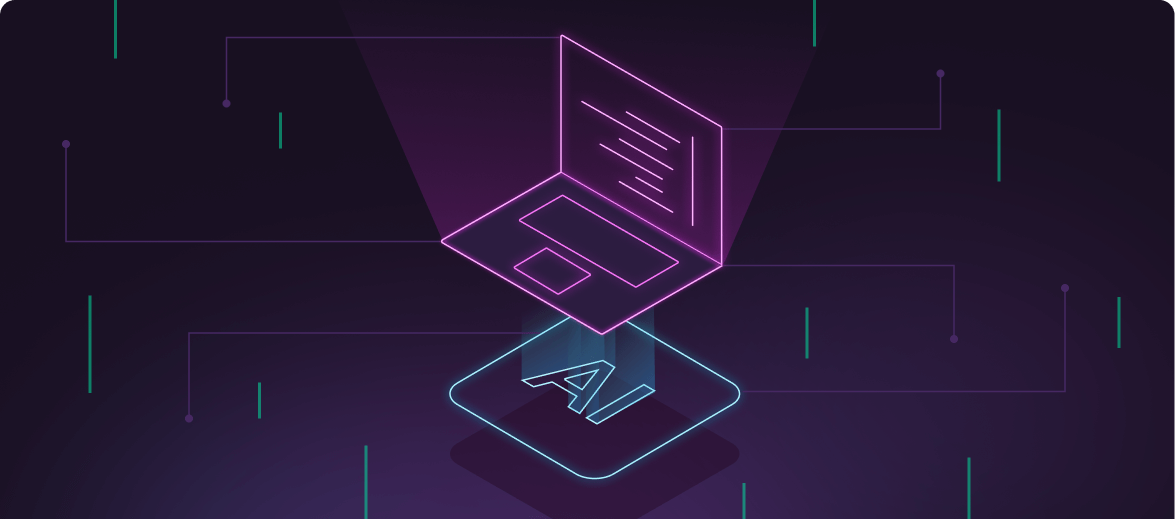
AI code generation is a technology that is changing the way we approach programming. It involves the use of artificial intelligence (AI) to write or generate code. Modern code generation tools are based on large language models (LLMs) like GPT-4 or PaLM 2, trained on massive code datasets, which can understand nuanced instructions and generate human-like code in any programming language.
Code generation tools can write code much faster than a human programmer, and are more versatile because they can learn any technology or framework represented in their training dataset. They can carry out tasks like debugging, code optimization, coding of new functions or modules, and writing code documentation.
AI code generation is revolutionizing the way we code, and is already improving the productivity of millions of developers worldwide.
Here are some of the important applications of AI code generation:
Learn more in our detailed guide to AI code assistant.
By reducing the need for manual coding, and ensuring less time is spent on mundane, repetitive tasks, such as writing boilerplate code, AI code generation allows programmers to complete tasks faster and focus on more complex tasks. This can dramatically improve productivity and reduce time-to-market for software products.
Human programmers, despite their best efforts, can make mistakes, which can lead to bugs and potential security vulnerabilities. AI code generation can help identify coding errors and dynamically suggest best practices, which can improve coding quality and also help upskill developers on issues like performance optimization and secure coding.
AI code generation also opens up new learning opportunities for beginner programmers. By observing code, examples, and explanations generated by AI, new programmers can learn best practices, understand coding patterns, and gain a better understanding of the programming language. In the same way, AI code generation can help professionals learn new technologies and frameworks, and onboard faster when starting work on existing, complex codebases.
Learn more in our detailed guide to AI code review.
Tabnine is the AI code assistant that helps development teams of every size use AI to accelerate and simplify the software development process without sacrificing privacy, security, or compliance. Tabnine boosts engineering velocity, code quality, and developer happiness by automating the coding workflow through AI tools customized to your team. Tabnine supports more than one million developers across companies in every industry.
Unlike generic coding assistants, Tabnine is the AI that you control:
It’s private. You choose where and how to deploy Tabnine (SaaS, VPC, or on-premises) to maximize control over your intellectual property. Rest easy knowing that Tabnine never stores or shares your company’s code.
It’s personalized. Tabnine delivers an optimized experience for each development team. It’s context-aware and can be tuned to recommend based on your standards. You can also create a bespoke model trained on your codebases.
It’s protected. Tabnine is built with enterprise-grade security and compliance at its core. It’s trained exclusively on open source code with permissive licenses, ensuring that our customers are never exposed to legal liability.
Try Tabnine for free today or contact us to learn how we can help accelerate your software development.

GitHub Copilot is another AI-powered code generation tool developed by GitHub in collaboration with OpenAI. It generates suggestions for whole lines or blocks of code, saving developers the time and effort of writing routine code. It draws on the vast number of public repositories on GitHub to learn patterns and generate accurate code suggestions.
GitHub Copilot works directly in your IDE, making it easy to use. It supports all popular programming languages and frameworks.
It is important to realize that because Copilot was trained on a very wide dataset of public code repositories, it can sometimes generate code that is insecure or contains security vulnerabilities. You also need to ensure that the generated code does not violate any copyrights, licenses, or legal agreements.
In addition, because Copilot is a cloud-based service, you should consider potential data privacy and confidentiality concerns when using the tool. The same considerations apply to other tools on our list.
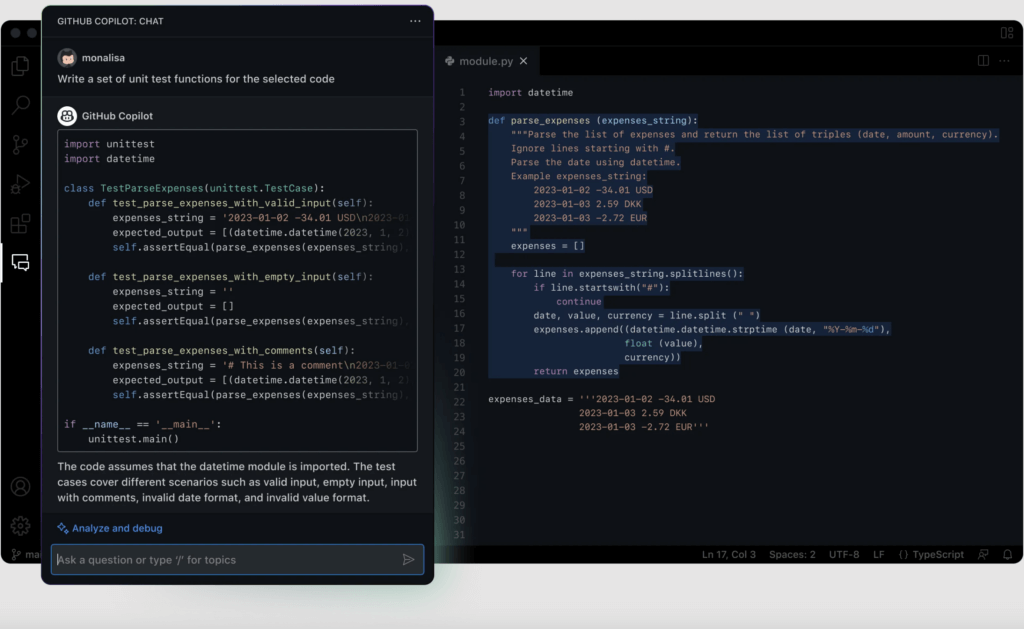
Replit GhostWriter offers real-time code completion as developers write, saving time normally spent on generating boilerplate code or troubleshooting syntax issues.
GhostWriter integrates with the Replit online code editor, allowing programmers to compose, execute, and debug their code without switching platforms. Additional features of the solution include automatic code refactoring and generating comments from existing code.
Meta’s Code Llama is an advanced language model, specifically designed to create and discuss code using text prompts. Code Llama is an extended version of Llama 2, Meta’s second-generation Large Language Model (LLM) with between 7-70 billion parameters and a context length of 4,096 tokens. A unique capability of the Llama model is its fill-in-the-middle (FIM) capability, enabling it to integrate code into pre-existing code blocks.
Code Llama can generate both code and descriptive language about the code, based on prompts in both natural language and code. It can also perform completion and debugging and supports programming languages including Python, C++, Java, PHP, Typescript (Javascript), C#, and Bash.
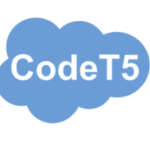
CodeT5 is an AI code generation tool designed to generate code from natural language descriptions. It can convert problem statements into code: You provide a description of the problem you want to solve, and CodeT5 generates the corresponding code. CodeT5 supports multiple programming languages and integrates with various IDEs.
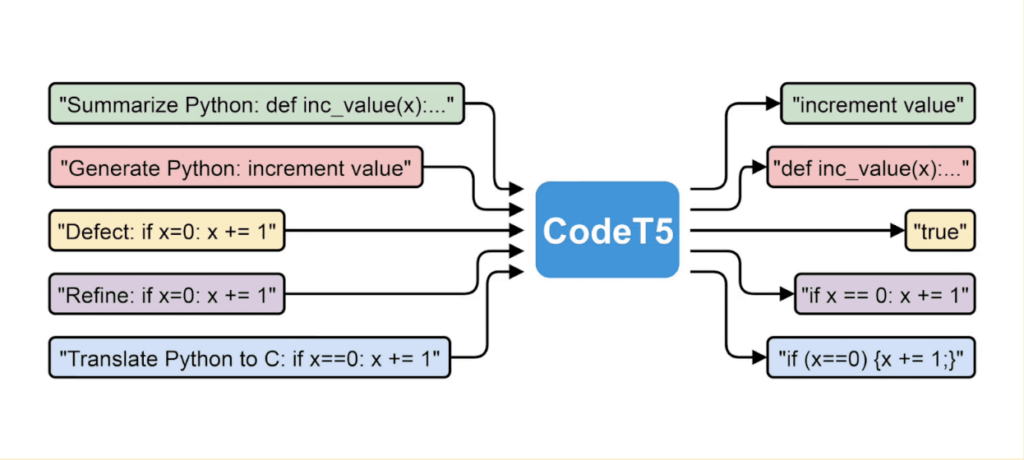
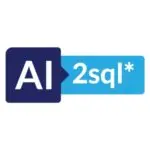
AI2SQL is an AI code generation tool that simplifies the process of writing complex SQL queries, making database management easier for both technical and non-technical users.
The tool uses natural language processing (NLP) to understand user queries, converting them into SQL commands. This means you can simply ask AI2SQL what you need to do with a database, and it will deliver the most appropriate query. This saves time and effort and also reduces the risk of SQL syntax errors.
Durable takes a different approach to other AI code generation tools. It converts graphical UI sketches into ready-to-use code. Durable’s technology can interpret human-drawn sketches, translate them into natural language requirements, and then use generative AI to create working code. Developers can scribble an application diagram and have it translated into HTML and CSS. This allows for fast prototyping and rapid design iterations.

Mintlify is a unique AI code generation tool that focuses on creating responsive web designs. It uses AI to translate design files into HTML and CSS code, significantly reducing the time it takes to turn a design concept into a live website.
Mintlify closely analyzes design files, ensuring that the generated code accurately represents every element of your design. This can save hours of manual coding and tweaking. The tool supports a range of design file formats, including Sketch, Figma, and Adobe XD.
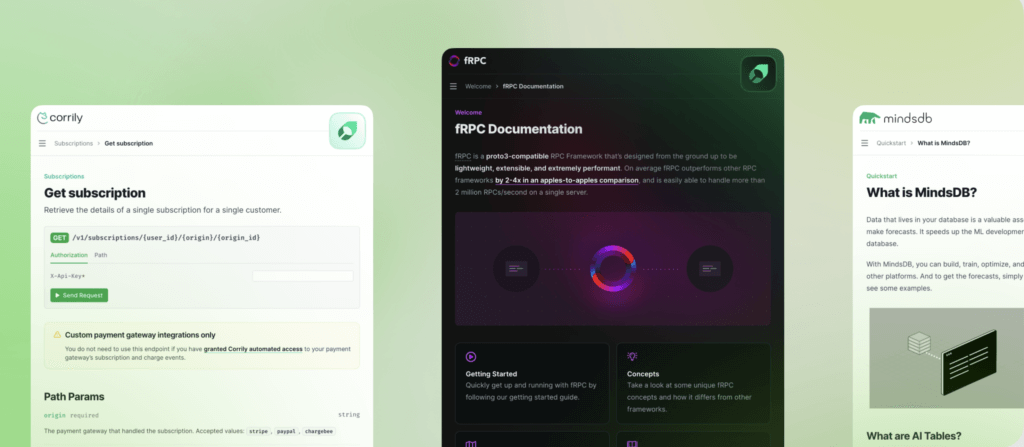
Sourcegraph’s Cody is yet another AI-driven tool for code generation. Cody can perform auto-completion tasks ranging from single lines of code to entire functions, and can be used with multiple coding languages, configuration files, or even documentation. It supports all coding languages, but works especially well with Python, Go, JavaScript, and TypeScript.
Cody is designed to be context-aware. It can generate answers to queries that require understanding multiple files or even entire repositories. It can generate personalized recommendations based on a company’s proprietary APIs and idioms.
There are minor differences in features and capabilities between the AI code generation tools we reviewed, but in the end, all of them are able to generate human-like code and improve developer productivity. However, most of these tools were trained on a wide dataset of public code repositories, which include code that is not secure or uses non-permissive open source licenses. This means you must carefully review code generated by these tools for security and licensing issues.
In addition, tools offered as a cloud service raise important concerns about the privacy and confidentiality of your code. Leakage of your proprietary code is a possibility and you should carefully examine each provider’s security and compliance measures.
Luckily, there are AI code generation tools without any of these concerns. Tabnine stands out of the crowd with the highest standards of privacy and security. Unlike other AI coding tools, Tabnine places special emphasis on code privacy, intellectual property protection, and open-source compliance. With a dedicated mission to bring AI to every facet of software development, Tabnine ensures seamless integration while prioritizing the privacy and security of user code:
Tabnine’s AI models can be isolated, with no external connectivity and no data retention, ensuring that user code remains completely private and secure.
Tabnine never stores user code and exclusively trains its generative AI on open-source code with permissive licenses, mitigating the risk of intellectual property litigation.
Tabnine ensures complete security by not training its AI models on code with non-permissive licenses, providing full transparency regarding the code used for training. In contrast, Copilot’s training on non-permissive open-source licenses, including GPL licenses with Copyleft clauses, could expose companies to legal risks. Although a filter is available to remove problematic code from suggestions, it may not always be foolproof, leaving the legal risk unresolved.
Get a 90-day free trial of Tabnine Pro today or talk to a product expert.